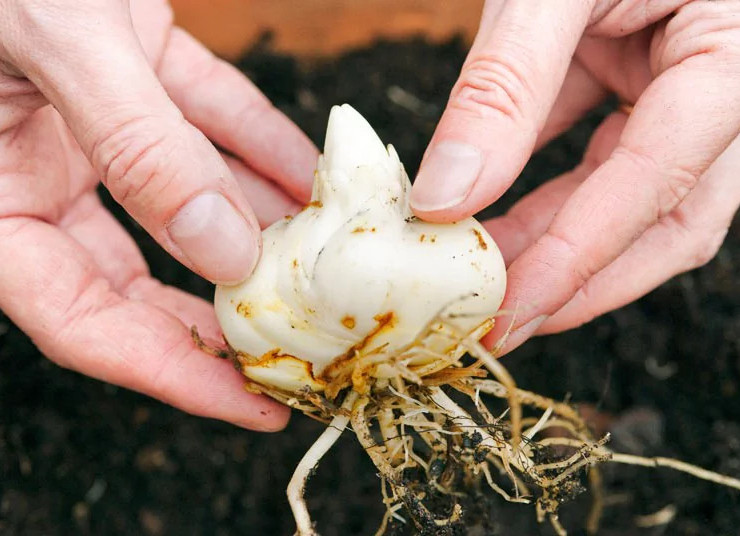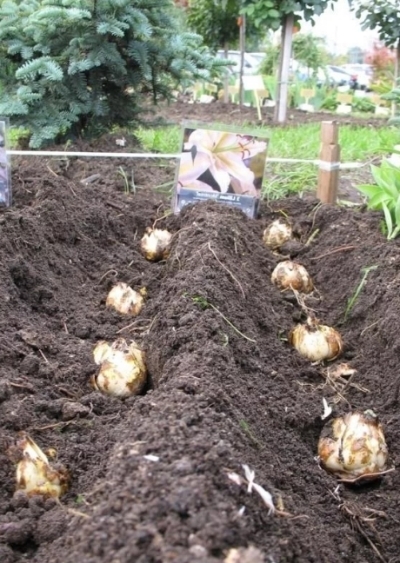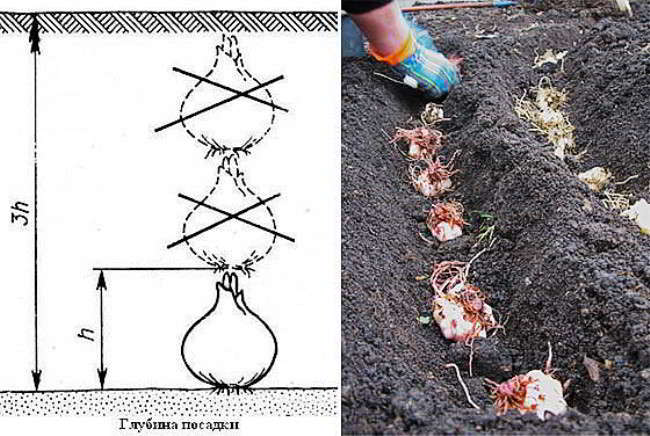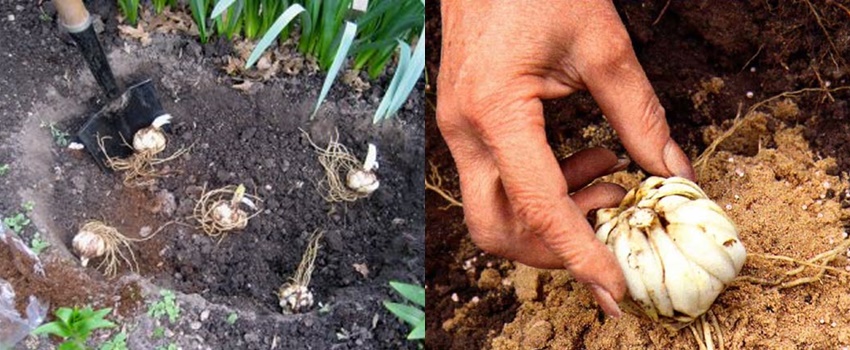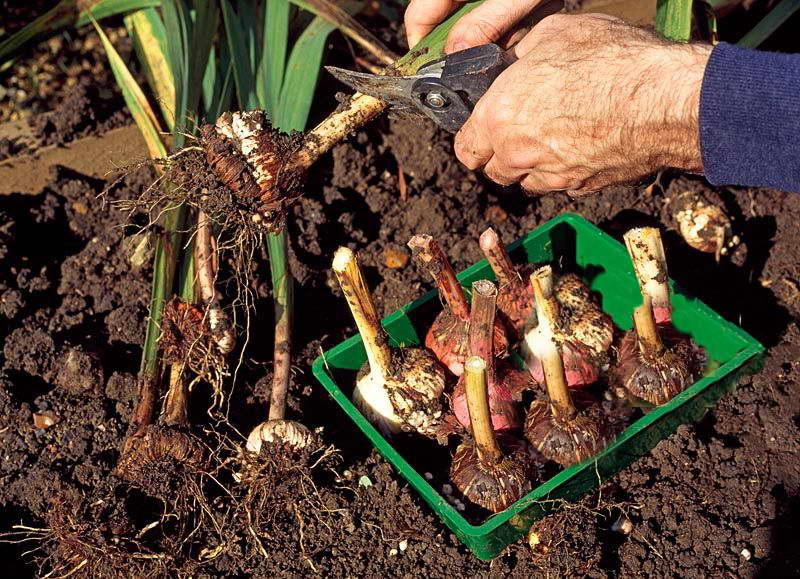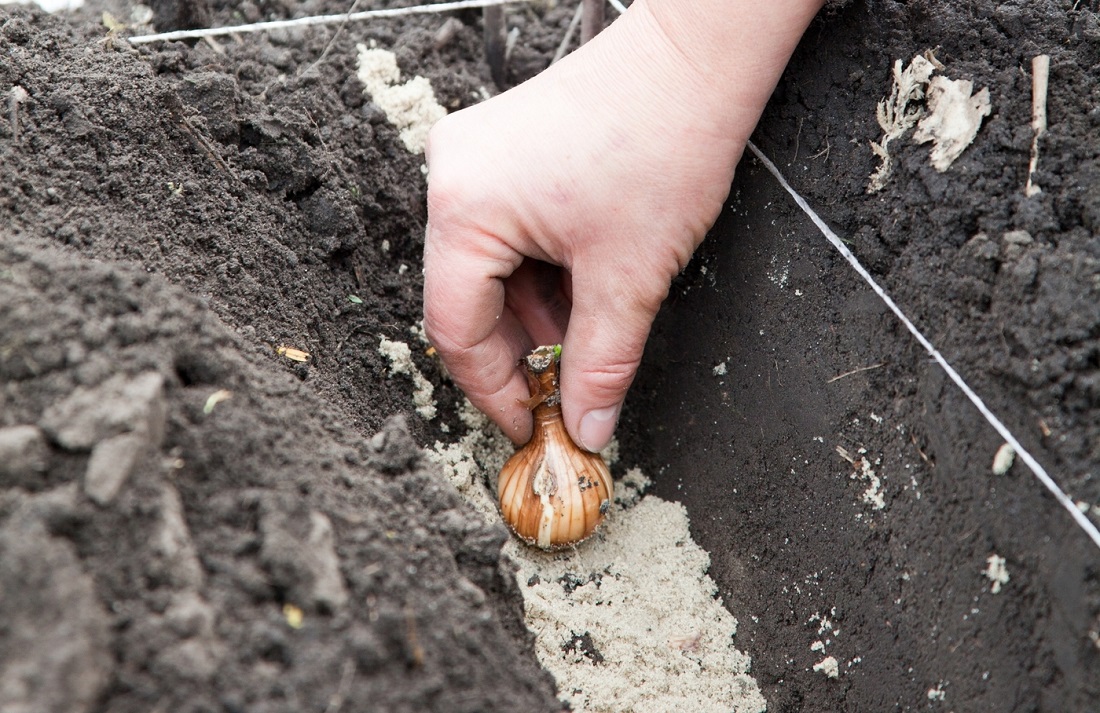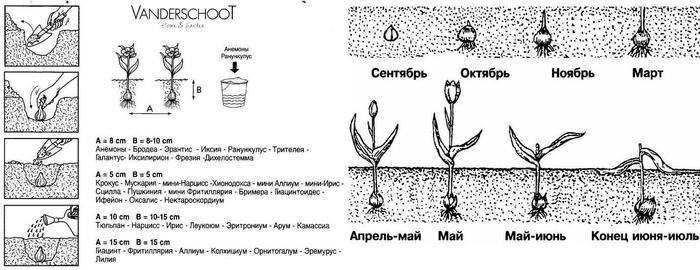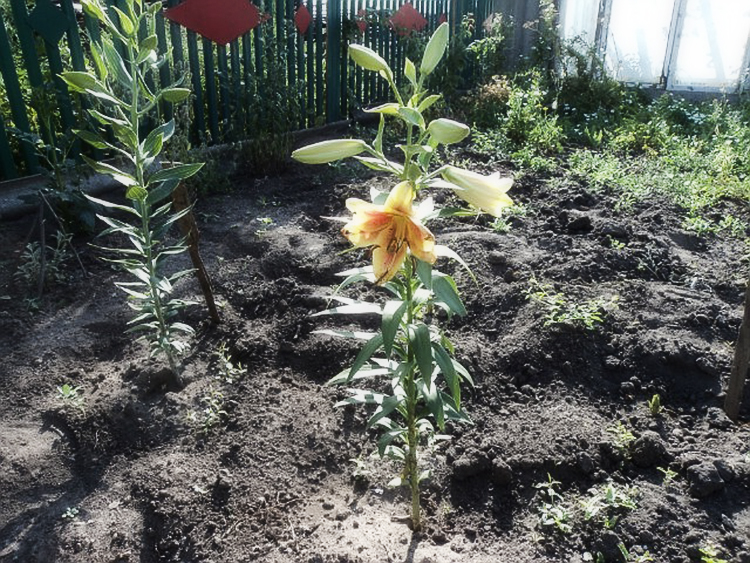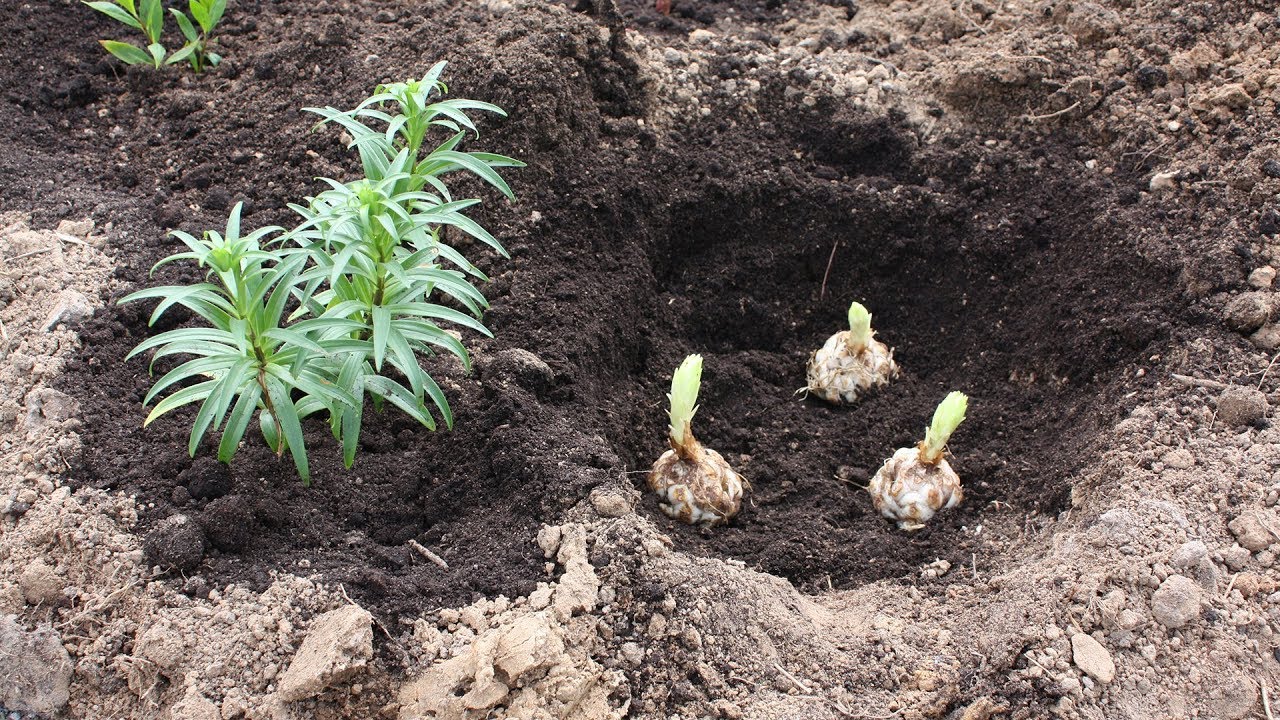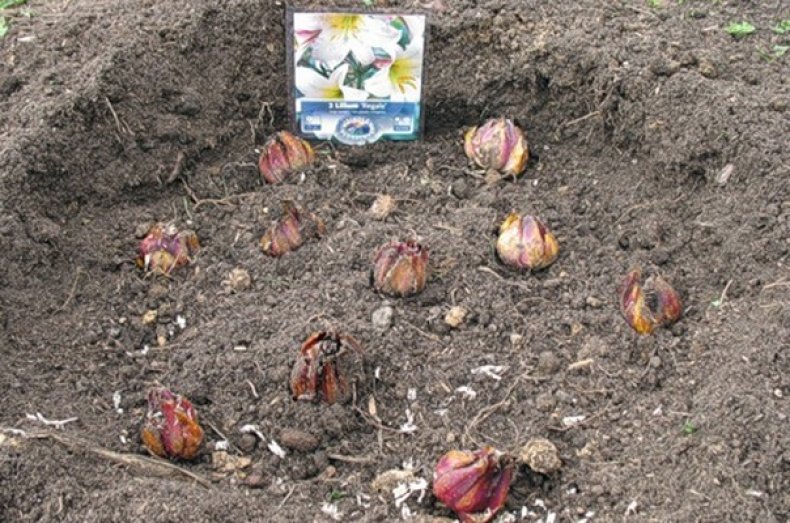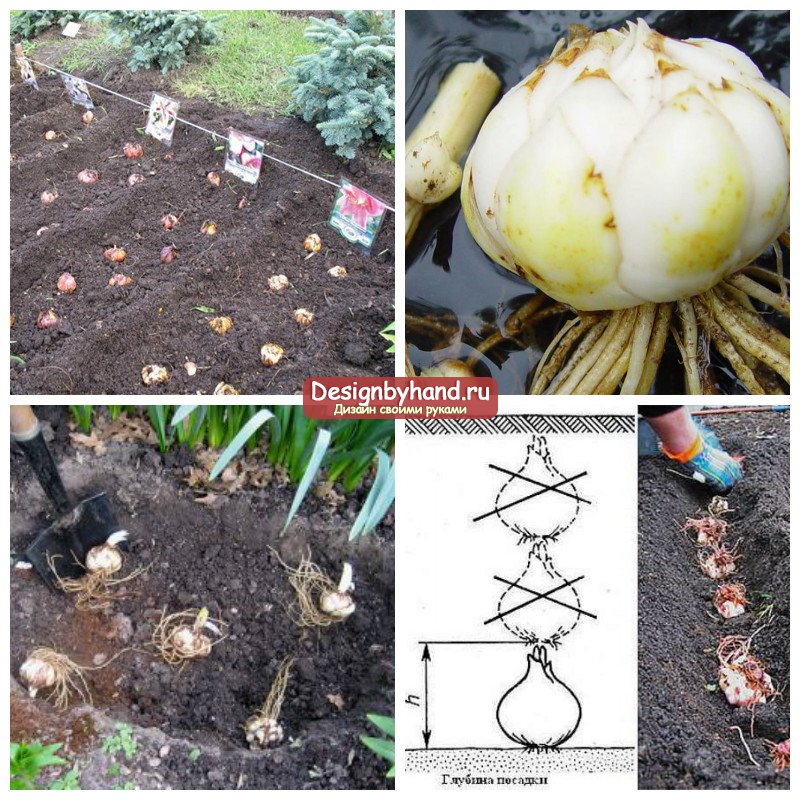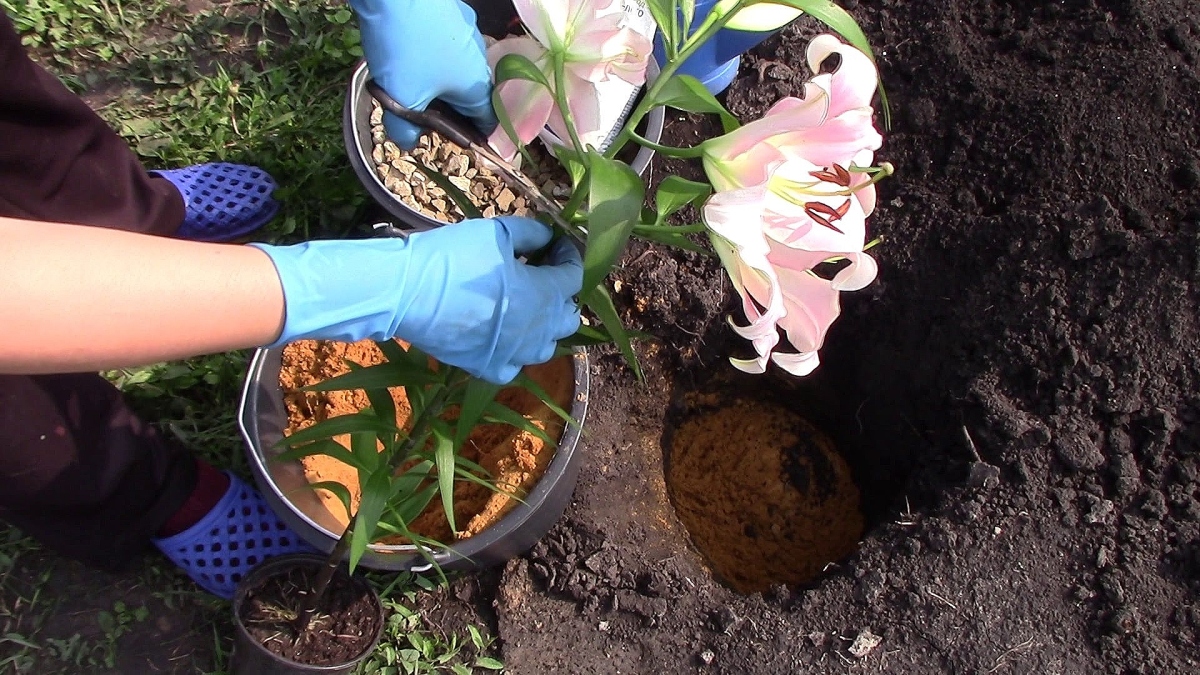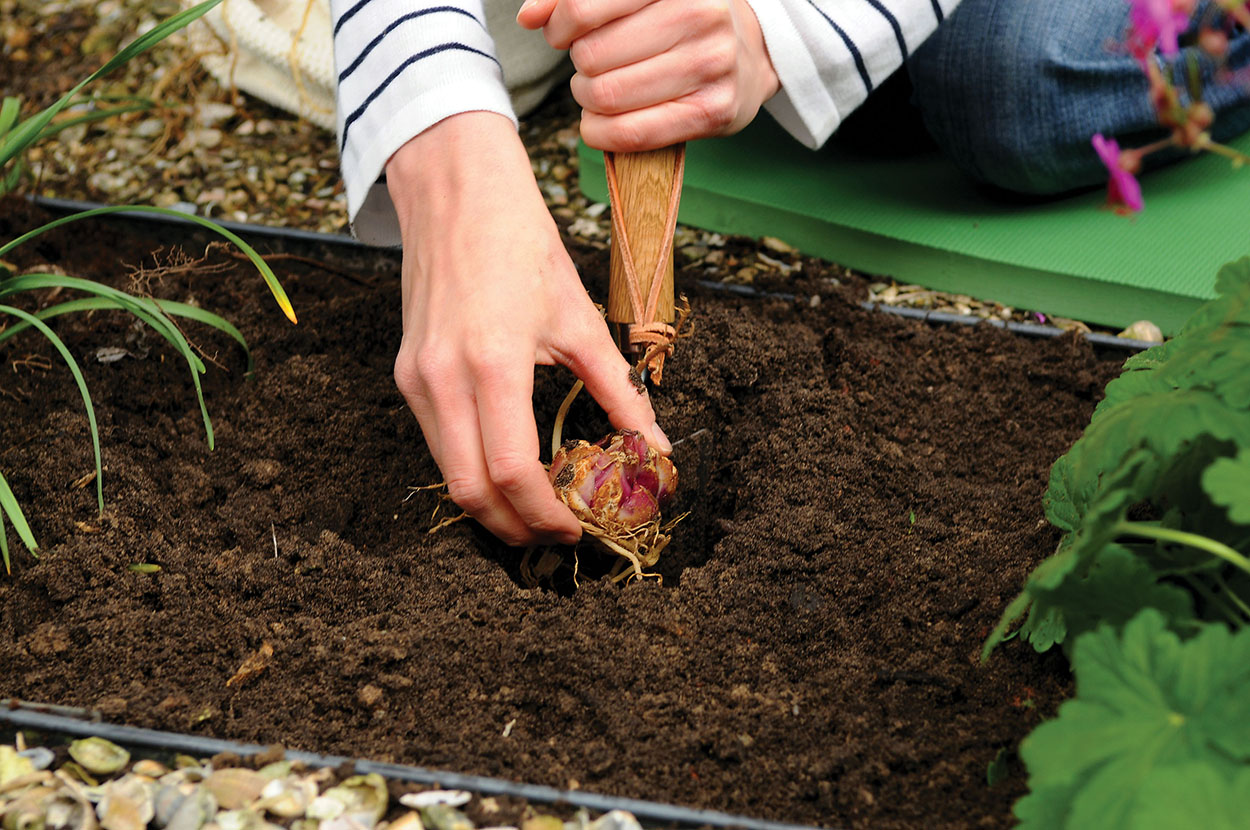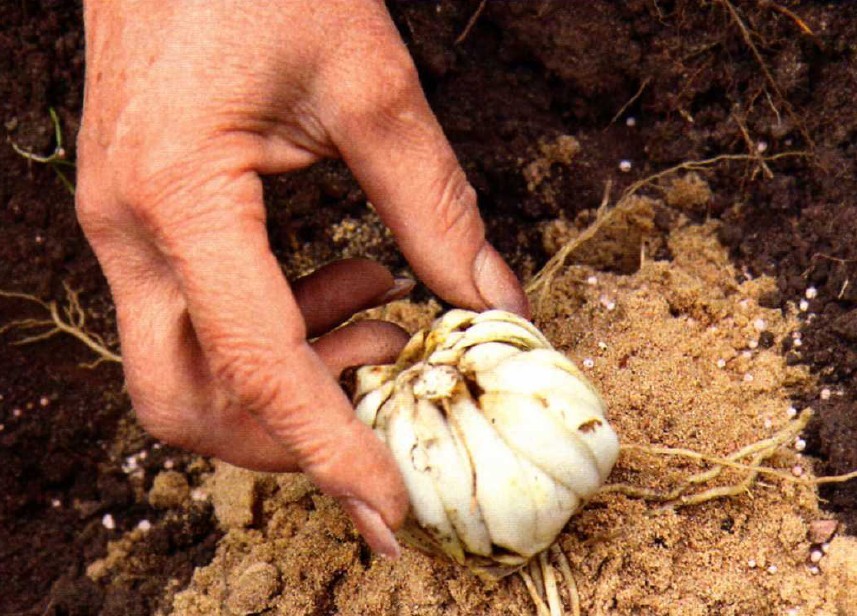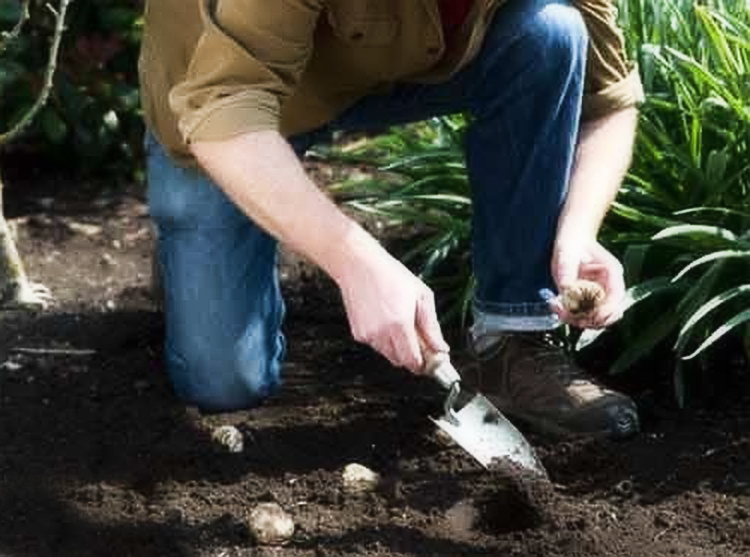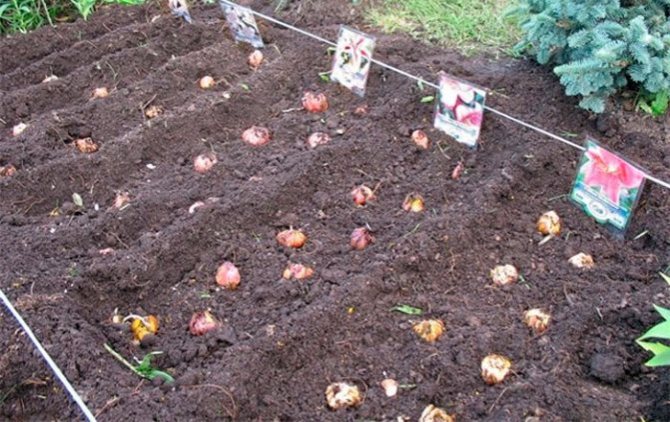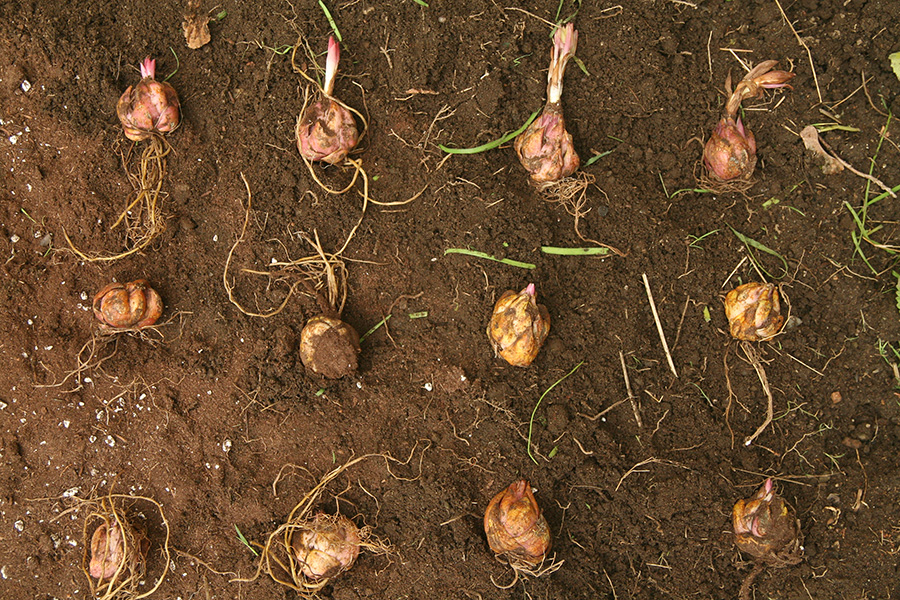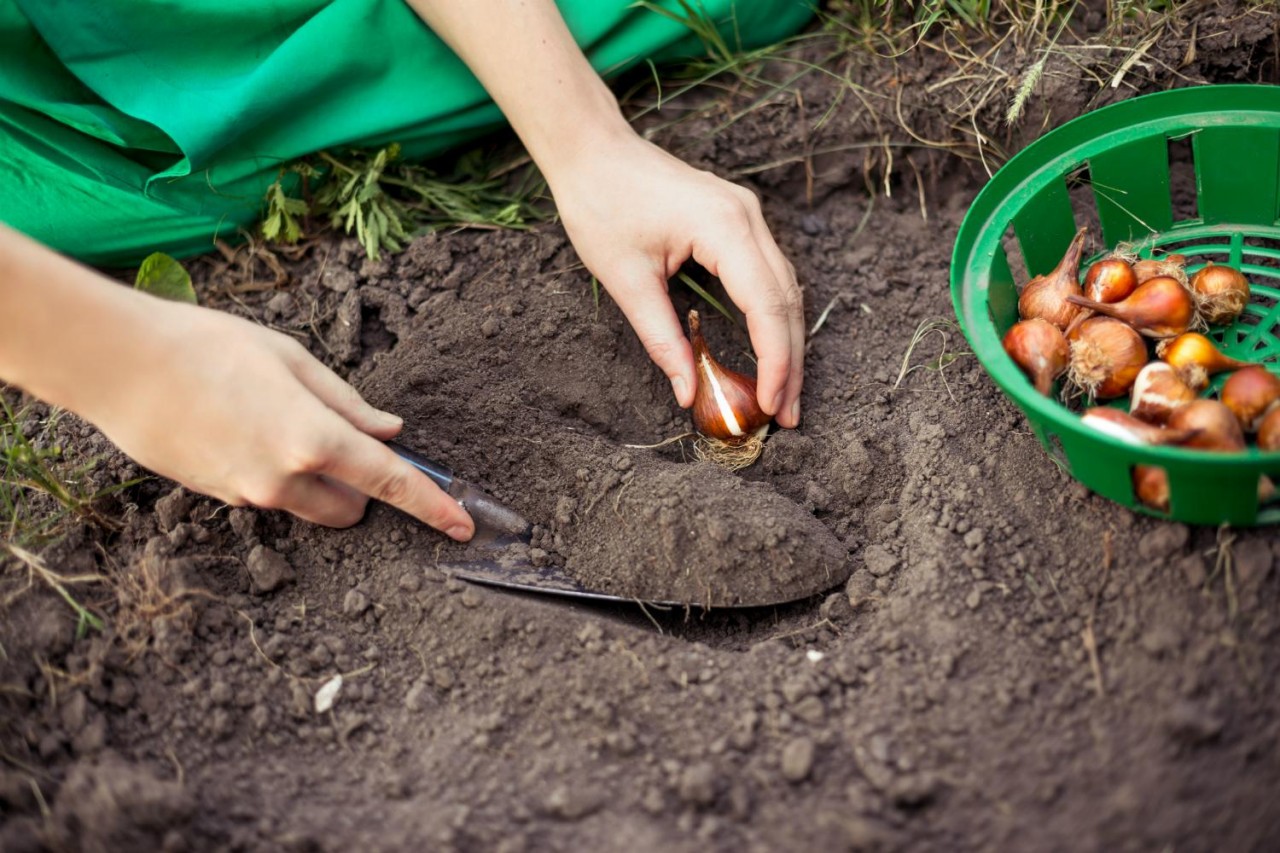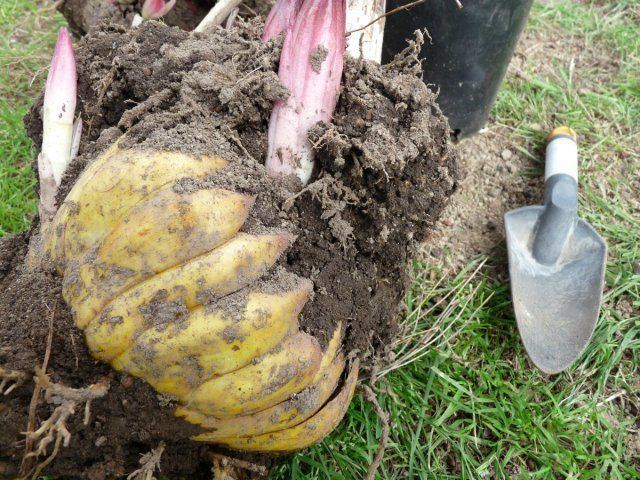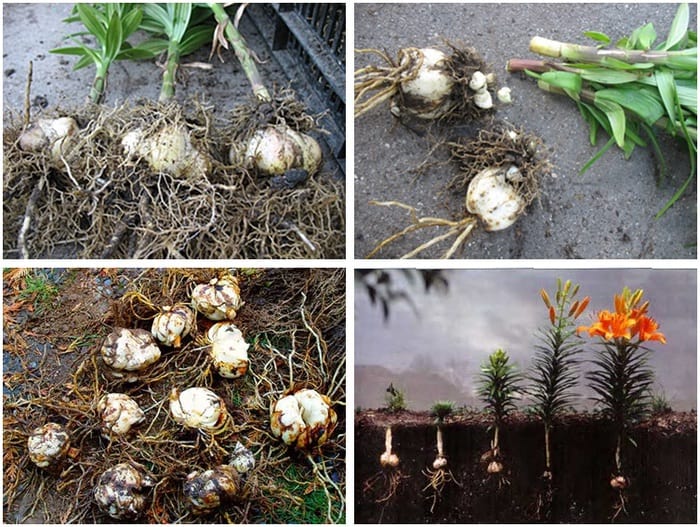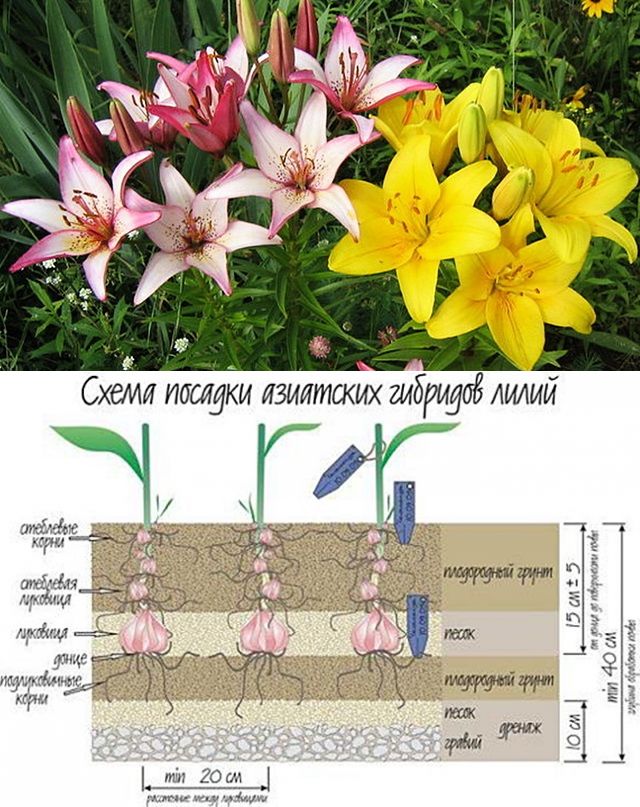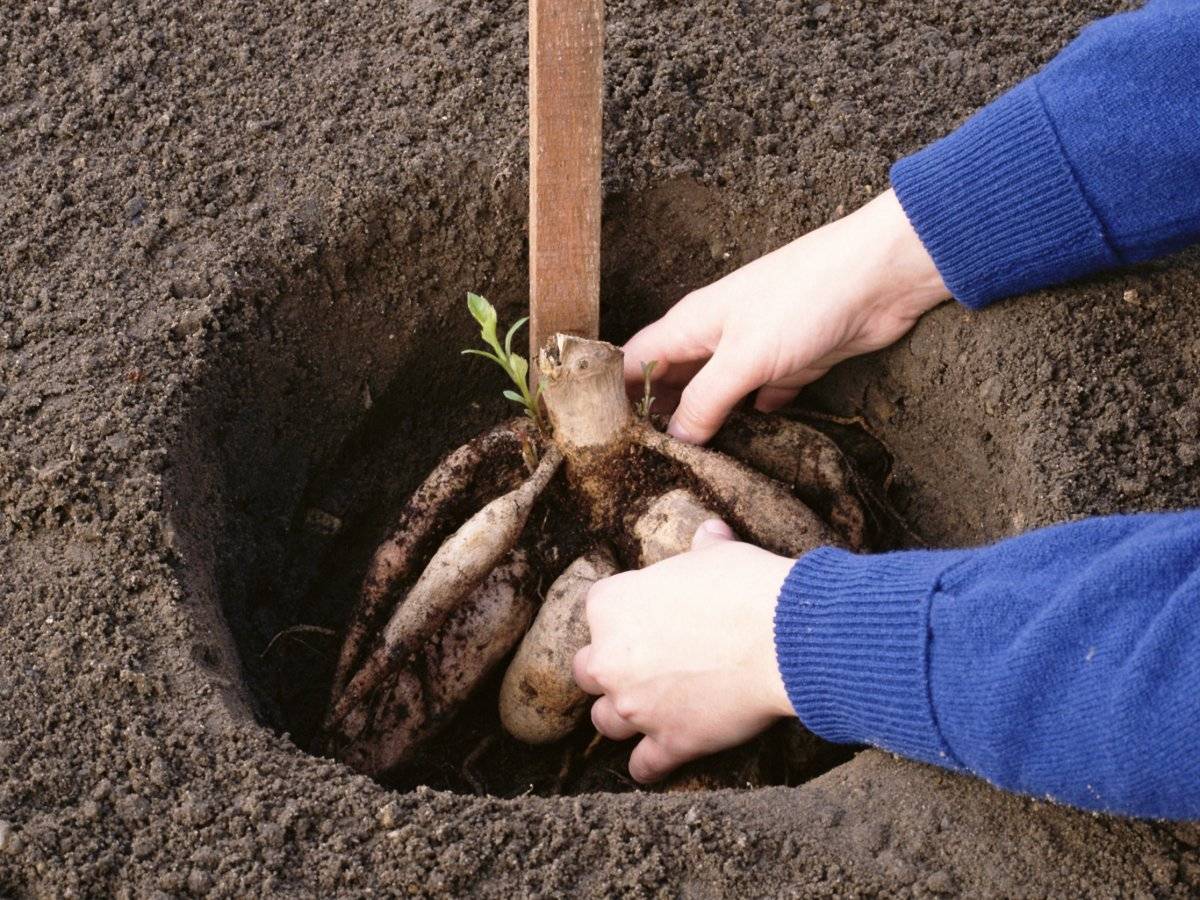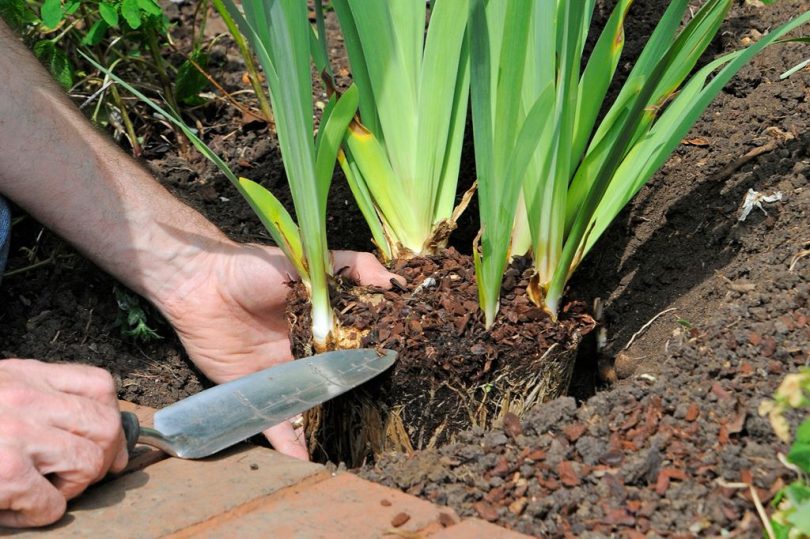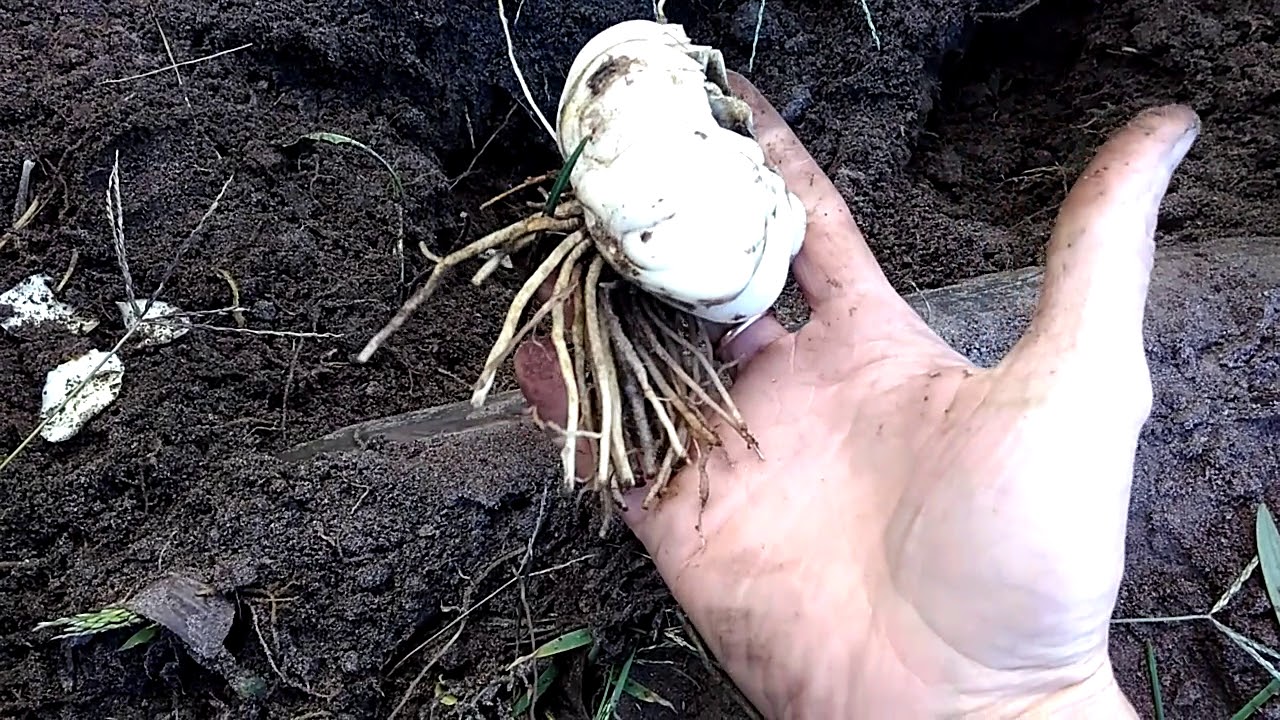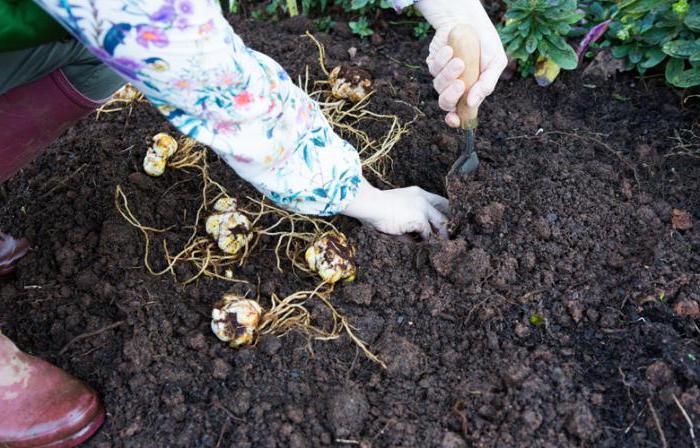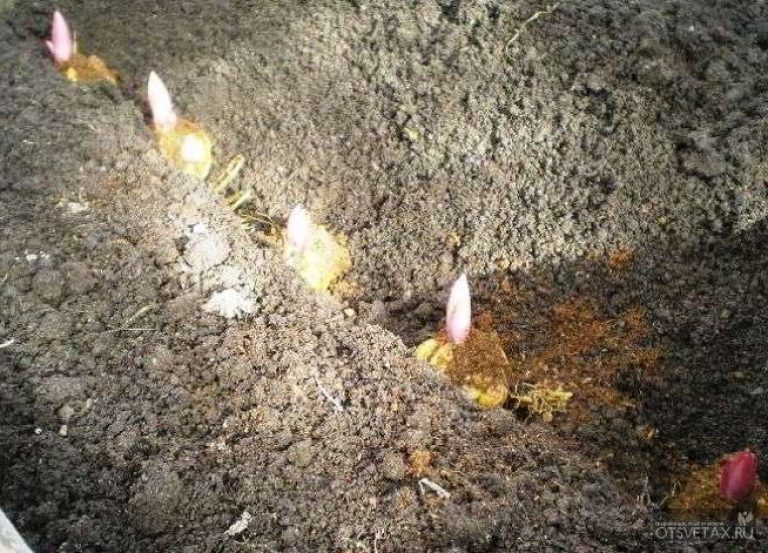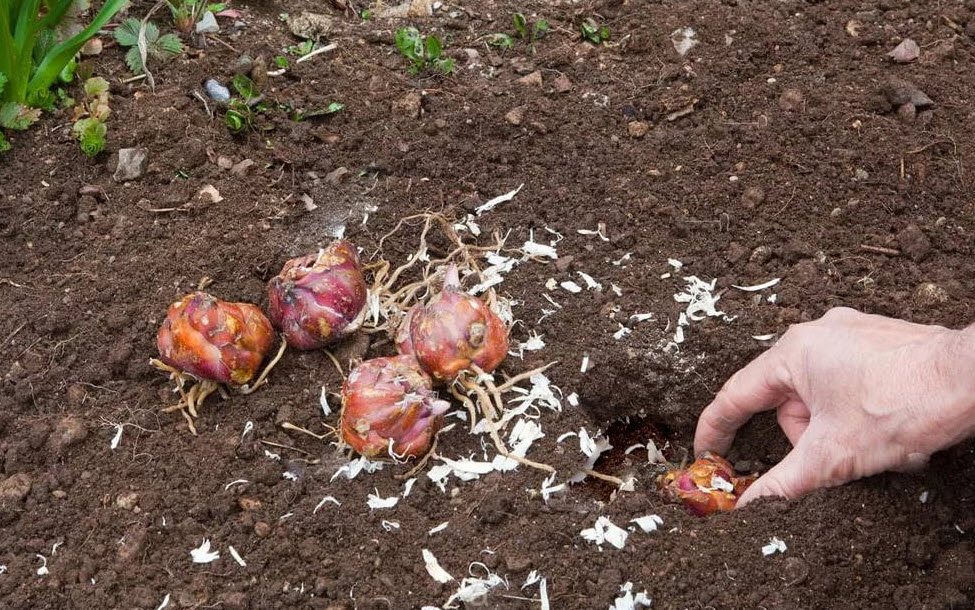Caring for lilies after planting
One of the advantages of planting bulbs in the fall is that there is no need for care. Plants do not need watering and fertilization. For the winter, plantings are covered with peat mulch mixed with sawdust or needles, spruce branches. With the fall of snow on the ridges, an additional layer is shoveled. In winters with little snow, additional agrofibre shelter may be required.
How to protect lilies from mice in winter
Frost is not the only thing that can harm the bulbs in winter. Small rodents - mice and rats are considered to be no less a misfortune. Moreover, they are not stopped by the onset of heat. Florists have many ways to keep lilies from mice in winter and more. The most effective of them, but also financially costly, is planting the bulbs in special baskets made of metal wire. In this way, the most valuable items can be protected. But if there are a lot of lilies, then improvised means are used: boxes, boxes, plastic bottles. The main thing is to make a sufficient number of small holes in them for root growth.
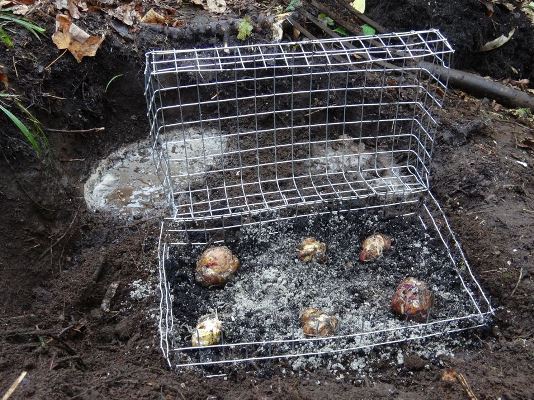
If the mice have settled in a flower garden and systematically spoil the flowers, then they resort to laying out the poison and setting traps. Chemicals for rodent control many, but many of the latter have already acquired immunity. Also, it is not an option if there are pets. Ultrasonic rodent repellents are somewhat safer, but their effectiveness is also questionable.
Buying and storing bulbs
Before purchasing planting material, it is imperative to find out what species it belongs to. Each of them has its own conditions of care
It is worth paying attention to the appearance of the bulbs. They should be strong to the touch, without damage, rot
Remove the soil and dry the bulbs brought from the store or collected on their own. Prepare a cardboard box or wooden box. Pour a layer of peat, put the onions on it, add peat again on top. Place the storage container in the basement or loggia. Check the condition of the bulbs periodically. When the roots dry out, moisten the peat a little. If the bulbs become moldy, wipe them with a solution of potassium permanganate.
You can also store the bulbs in a plastic bag filled with peat. You need to inflate it, tie it up, and store it in a dark place. Children will appear in 2-3 months. Transplant the bulbs into peat containers with the children, leaving the tip of the scales on the surface. Take it out to the basement.
Storage conditions:
- the room must be dry;
- temperature + 5-10 degrees;
- good ventilation.
What to do if the bulb has sprouted
Often, flower growers are faced with the problem of germination of planting material and the acquisition of bulbs with already existing sprouts.
The main way to solve this issue is to remove the shoot in a timely manner, detailed instructions are given below:
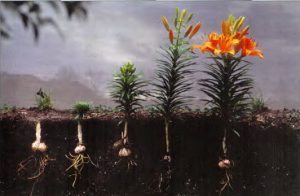
- Wait a while for the existing sprout to reach a length of about 20 cm.
- With gentle and smooth movements, begin to rotate the process in different directions, gradually pulling it up.
- With the correct manipulation, the sprout will be completely removed from the bulb and will not leave its parts in it.
- Once the sprout has been completely removed, the bulb can be planted as usual.
However, the implementation of this procedure requires a certain skill and dexterity, otherwise there is a risk of causing dangerous damage and subsequent death of the bulb.
For this reason, in the absence of proper experience or self-confidence, it is best to refuse to remove the sprout and use the following algorithm of actions:
Initially, it is also necessary to wait for the shoot to grow slightly.
Plant the bulbs in a pot of considerable depth and filled with suitable soil for growing lilies.
Place the pot in a bright enough place and care for it appropriately.
At the end of May, carefully remove the lily from the pot and move it to the garden for outdoor planting.
It is necessary to transplant the grown lily very carefully, since it does not tolerate damage to the root processes.
The hole prepared for planting a flower should be deep enough to accommodate the overgrown and formed root system.
Daylily - lily for the lazy
No wonder the breeders called these unpretentious and disease-resistant perennials "lilies for the lazy." And the statement that the more beautiful the flower, the more capricious it is, is not applicable to this plant. Daylily grows well in any garden soil, feeling comfortable both in the bright sun and in partial shade.

Not inferior in beauty to garden lilies and their closest "relatives" - daylilies, but unlike fastidious beauties, they are very easy to care for
Planting and caring for daylilies takes a minimum of time and effort. And the plant begins to delight with flowering already in the first year of planting. These perennials prefer neutral or slightly acidic soil. They are able to grow on depleted soils, but they show the greatest decorative effect on loose loams rich in organic matter. They are tolerant of infrequent watering, but, like lilies, do not tolerate stagnant water.

Perfectly combined with ornamental grasses and flowering annuals, they perfectly mask the slow disappearance of spring-flowering bulbs.
Daylilies can become a bright decoration of any flower garden. With the right selection of species with different flowering periods, the flowering of daylilies will not be difficult to stretch for the entire season.
Features of spring care
As soon as the snow melts from the flower bed, you need to start putting things in order on it.
But to do this in the area where lilies grow, you need to be extremely careful.
The very first warm days, warming up the soil even a few centimeters, wake up lily sprouts.
They may have already made their way to the surface, and you could accidentally damage them.
If the lilies were covered for the winter, it is necessary to remove the shelter from them as soon as possible.
Depending on the variety, they begin to germinate from the beginning of April. Even under cover, the first shoots sometimes break through. Therefore, the site must be urgently freed from the shelter so that the soil warms up faster.
IMPORTANT! If the shelter is not removed in time, the sprouts under it will be too delicate and pale, and subsequently they will be burned by the bright spring sun. The sprout may even completely burn out, and you will not get a flower from it this season.
The sprout may even completely burn out, and you will not get a flower from it this season.
If you did not have time to remove the shelter in time and sprouts appeared under it, leave a small layer of leaves or straw on them. This technique will allow the sprouts to get used to the bright rays, and they will not burn out.
After removing the shelter, it is advisable to slightly loosen the ground around the lilies. The bulbs will receive adequate moisture and air. Loosening is carried out with small rakes and very shallow, so as not to hurt delicate seedlings.
IMPORTANT! Loosening is best done when all the sprouts have appeared.
If you inadvertently break off a lily shoot, it will no longer grow
If you inadvertently break off a lily shoot, it will no longer grow. Be careful also when removing weeds in the area with lilies.
They most often appear before flower shoots, and too zealous removal of them can damage the shoots of lilies. And if you touch the bulb at the same time, then it will remain in a dormant state, or the formation of children will begin. Then this season there will be no flower on the bulbs.
Be careful when removing weeds from the lily area. They most often appear before flower shoots, and too zealous removal of them can damage the shoots of lilies.And if you touch the bulb at the same time, then it will remain in a dormant state, or the formation of children will begin. Then this season there will be no flower on the bulbs.
Features of planting lilies
The process of planting lilies at different times of the year has its own individual characteristics. The specifics of the process during its implementation in the spring are discussed below:
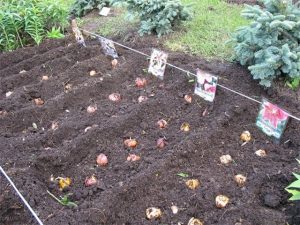
When planting varieties that in adulthood are distinguished by a significant height, a support must be organized at the initial stage. It is not worth tightening it, since its installation at a later date can damage the lilies.
In the spring, it is recommended to plant oriental varieties of lilies.
It is necessary to be prepared that in the first year such plants will significantly lag behind in development and grow more slowly, unlike lilies planted in autumn. This is a normal phenomenon, since after a year all differences between flowers of different planting dates will be completely eliminated naturally.
When buying planting material before spring planting, you must choose the healthiest specimens that do not have any signs of damage.
This is an important condition, since the planting material will have significantly less time to adapt to new conditions.
The autumn planting of lilies is also not devoid of its own specificity, all of its significant features are discussed below:
It is imperative to powder the planting material with wood ash, it is not only rich in potassium, but also is a protective agent that will protect the bulbs from most varieties of pests and parasites. Providing such protection is imperative in the autumn, since many insects or their larvae can settle in the planting material or the soil near it in order to overwinter, feeding on tubers at this time.
It is necessary to be more careful about the choice of feed mixtures and fertilizers, studying their composition in detail. In the autumn, it is recommended to exclude any products that include a large amount of nitrogen, since it can provoke premature germination of the bulbs.
If this happens while they are in the ground, then the lily will most likely not survive until spring.
During the autumn planting of lilies in areas with a harsh climate, it is recommended to pay attention to varieties with an increased level of frost resistance, for example, the Central Asian variety.
Additionally, the organization of a shelter for the winter is required. For this, after planting, the soil is mulched with fallen leaves, after which it is covered with spruce branches from above.
It is recommended to cover it on top with plastic wrap, which will provide additional protection against moisture and decay.

Bulb transplant rules
Now let's look at how to transplant lilies in the spring. If the bulbs purchased or dug up in the fall began to lose their elasticity or sprouts appeared on them, and the planting time did not come, it is necessary to plant them in a container.
This will preserve the quality of the bulb.
Fill a container or any container with a mixture of peat and garden soil and plant an onion in it.
It is advisable to use a dish that can be cut when planting the onion.
ADVICE! You can use peat pots for seedlings.
This way you will not damage the bulb when planting it in the ground.
Also convenient are boxes from under dairy products, which are easy to cut, and at the same time a clod of earth is preserved.
Before removing the bulb from the container, the soil in it must be slightly moistened. Lily is carefully removed along with a lump of earth and placed in open ground
This should be done with the utmost care so as not to damage the roots.
IMPORTANT! If, when transplanting lilies in the spring, damage the roots of the bulb, the flower may not take root and die.
If, when planting, it is necessary to deepen the lower part of the leaves, then they must be removed from the stem so that they do not start to rot.
The process of caring for lilies in spring is a crucial moment.Carrying it out in accordance with all the rules will contribute to the active growth and lush flowering of beautiful lilies on your site.
Wintering plants
If the lilies are not dug out after flowering, they need to be insulated for the winter. Spread a layer of humus 7 cm or 20 cm of fallen leaves. Cold-sensitive varieties are additionally covered with agrofibre, film. The soil must remain dry for the winter.
Curly hybrids can hibernate without shelter. Cover shallow lilies before frost. The rest can be covered after the first frost. If you insulate the flowers in a slightly frozen soil and do not open them in early spring, this will delay their vegetation.
It is better not to leave some varieties for the winter in the open field. Especially if the winters are harsh. They are removed from the ground, stored at medium humidity, moderate temperatures (not minus), in a well-ventilated room.
Lilies are very beautiful and popular flowers that amaze with their variety. There are many species and varieties that require their own approach to cultivation and care. The main care consists in a sufficient amount of moisture and timely feeding. There are many ways to breed lilies. Knowing a few simple rules, these flowers can be grown not only by experienced florists, but also by beginners.
How to choose and how to store lily bulbs before planting? When and how to plant flowers outdoors? How to care for plants? The answers to these questions and other useful information can be found after watching the video:
What determines the choice of landing time?
There are several opinions about the timing of planting lilies in open ground. The traditional planting time is autumn, or rather its first half. This is due to the natural cycle of plant development: after flowering, a dormant period begins (only a few weeks), after which the growth of the bulb is activated, the roots hatch. As a result, at the very beginning of spring, along with the first rays of the spring sun, a flowering bud appears.
However, sometimes, for various reasons, gardeners choose early spring for planting work. The reasons can be any - from a simple lack of time to taking into account the characteristics of a particular variety. Suppose the Oriental hybrids are thriving, but the North American varieties simply cannot withstand the harsher conditions.

Consider the benefits of an April open-air landing:
- bulbs do not need to be buried in the soil and specially insulated, a refrigerator is suitable for storage;
- home "wintering" excludes freezing and spoilage, guarantees complete safety;
- with good preparation of the soil and bulbs, the plant has time to develop and bloom on time.
There are also disadvantages worth mentioning. For example, in some varieties, the root system does not have time to fully develop, and plants exist only thanks to the strength of the bulb. It is clear that neither the desired growth nor beautiful inflorescences should be expected. Another unpleasant nuance is the absence of children in the "spring" lilies, which are often used for reproduction. By the way, crops planted in autumn give about 10 healthy children.

Tubular varieties are not susceptible to diseases and frost resistant, therefore they are recommended to be grown even in the northern regions.
For more convenient care of the flower garden, it is better to place spring and autumn plantings in different places, since soil preparation, irrigation regime, and top dressing will be radically different.
In late spring, at the end of May, as well as at the beginning of summer, it is not worth planting lilies - the plants grow weak and unprepared, more susceptible to disease. The most suitable period for planting in the middle lane is the end of April.
Choosing a landing site
oriental lilies
When planting in the ground, we choose a sunny corner for oriental lilies: these flowers - lovers of warmth and light
... But the base of the plants must be shaded - for example, by planting low annuals next to the lily. I have come across recommendations in the literature to plant lilies of oriental hybrids in partial shade, but my own experience suggests: the sun is still preferable. In a warm, sunny area sheltered from the winds, they even hibernated in the ground, under a light cover of spruce branches and a snow cover.
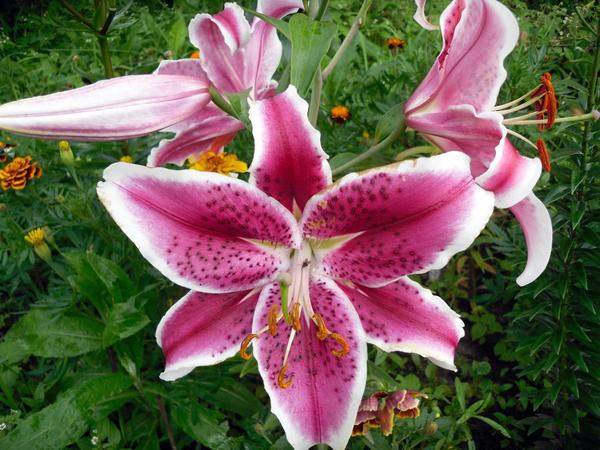
You can not plant lilies in wet areas - from excess water in the soil, the roots begin to rot, diseases develop.
Dates of autumn planting of lilies
When choosing autumn for lily seedlings, you should be guided by the weather - like many planted plants and trees, warm and moderately rainy weather is necessary in autumn.
Otherwise, there is a high risk of losing seedlings or their subsequent unhealthy growth. Autumn planting should also be carried out for the following factors.
Depending on the region
- Middle zone of Russia. In the middle zone of the country, lilies are planted approximately in October, ending about 2 weeks before the onset of frost. Lilies are often planted with winter garlic by many gardeners. Preparation of the soil should be started at the beginning of September, while it is still warm.
- Siberian and Ural regions. It is advisable to plant lilies in the Siberian and Ural regions before the end of September, starting the preparation of the soil in the second half of August. Of the varieties, it is worth choosing those that have already been acclimatized to these areas, with the exception of the Dutch variety - it is planted exclusively in the spring.
- Leningrad region. Due to the climate of the Leningrad Region, the autumn planting of lilies is carried out exclusively in the second half of September, if the weather is favorable - no more than 2 weeks before the planting date in the middle lane.
- Southern regions of Russia. The southern regions are strikingly different in their weather conditions - warm and moderate humidity persists until November - early December. In the southern regions, lilies are planted before the end of November, but it is advisable to start preparatory work in the second half of October.
Depending on the variety
- Varieties such as the white hybrids, King Lily and Candidum, are suitable for transplanting in early fall.
- It is advisable to plant tubular varieties and oriental hybrids in the first half of October.
- Dutch varieties are undesirable for autumn seedlings in the ground - they practically do not take root.
- Asian hybrids and other varieties are generally suitable for the gardener's time of autumn.
Lunar calendar
The moon has a significant impact on many processes occurring on the surface of the planet. Including the development of plants and trees.
According to the lunar calendar for 2019, favorable landing days:
- September - 2nd, 3rd, 5th, 7th and 9th of the month.
- October - 1st, 4th, 5th, 11th, 30th and 31st of the month.
Unfavorable numbers are 14 and 28 of both months.
Preparatory stage
When planting lilies in an open area in autumn, it is recommended to pay special attention to the air temperature. If the bulbs are planted in too warm weather, it can provoke their germination.
This is absolutely impossible to allow, all the work done will not give the desired result. It is recommended to carry out podzimny planting activities at an average daily air temperature of up to 10 degrees.
In addition, to achieve the best effect, you should familiarize yourself with the lunar calendar, where the phases of the natural satellite of the Earth are clearly spelled out.
Site selection and soil preparation
It is advisable to plant lilies in the fall in a well-lit and sufficiently protected area from through winds. The choice of soil should be focused on drained, loamy or sandy loam soil. Growing lilies on heavy, non-moisture-intensive and clayey soils is not effective. If the bulbs are planted in clearings with close adhesion to the surface of groundwater, then there is a high probability of root rot and plant death.You should be aware that the roots of some varieties can go deep up to 2 m.
The acidity level also matters for perennial crops. For Candidum lilies, tubular hybrids and Martagon, neutral or slightly alkaline soils are preferable. For other varieties, more acidic soils are acceptable. In the area where the plants are supposed to be planted, there should be no weeds.
The soil must be dug to a depth of 40 cm, adding superphosphate (100 g), potassium sulfate (50 g) in the process, where the components are designed for 1 sq. m. Compost and peat also have a beneficial effect on flower culture - they are added at the rate of 1 bucket of each fertilizer per 1 sq. m. For light soils, only peat is sufficient. For varieties growing on acidic soils or with a neutral reaction, cultivation with limestone, chalk or wood ash (200-500 g per square meter) will be required.
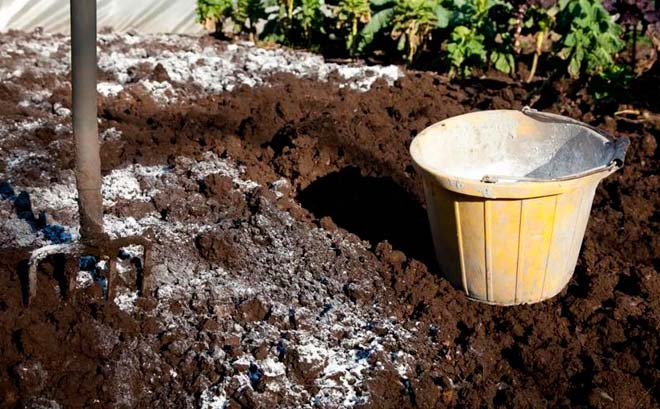
Selection and processing of planting material
When planting lilies before winter, it is important to choose the bulbs correctly. The success of growing a flower crop will depend on the quality of the planting material.
The planted bulbs must be absolutely healthy, without signs of putrefactive processes, damaged areas and spots. It is best to select large, dense specimens without soft areas. Medium-sized bulbs are a good option for planting in open areas. But you should not choose small ones: it is unlikely that you will be able to see beautiful flowers in the first year of planting.
Recommendations for the preparation of perennial bulbs:
- Cutting the stems should be done carefully, at a distance of 5-10 cm from the ground surface.
- You need to dig out the flowers with a pitchfork - this way you will be able to preserve the integrity of the root system.
- It is imperative to shave off the flower from excess soil, remove dry parts, scales and roots.
- Disinfect the planting material with a weakly concentrated solution of potassium permanganate or drugs such as Fundazol, Karbofos, Benomil. The duration of the procedure is from 30 minutes.
- Pickled bulbs must be dried in the shade within 24 hours. If you put them in a sunny place, they will simply dry out.
How to plant lilies in the fall?
The procedure for planting a lily in the autumn season.
Site and soil selection
For lilies, it is necessary to carefully select the planting site and soil:
- The site needs to be protected from strong winds and well lit - possibly minor surface irregularities.
- The place of planting of lilies must be selected taking into account the level of drainage - lilies poorly tolerate high moisture. Also, the soil is necessary for lilies to be well-loosened - basically a mixture of sand, humus and sod land with a clay content of no more than 20% is recommended. In waterlogged soil, drainage grooves are required to drain the incoming moisture, and a 4-7 cm layer of drainage from sand, gravel or expanded clay should be laid in the holes in advance.
- Depending on the variety of lilies chosen, the soil should have its own acidity - if low acidity is desirable for Candidums and tubular lilies, then an increase in the acidity level is necessary for American and East Asian varieties.
- Digging the territory for lilies must be carefully carried out - to exclude all types of weeds, including perennial ones.
Preparation of planting material
It is recommended to disinfect the material before planting:
- Material processing with foundation or karbofos at the rate of 2 grams of substance per 1 liter of water. It is also possible to use a bright pink manganese solution.
- The bulbs should be soaked for an average of 20 to 25 minutes, followed by partial drying.
Step-by-step landing
The landing procedure is characterized by the following steps:
1. Determination of the depth for planting material - the larger the bulb, the deeper it lies:
- Low-growing plants are located at the rate of 8-10 average depth and distance between themselves up to 18 cm.
- Medium-sized varieties are located at the rate of 12-15 cm depth and distance between themselves from 20 to 30 cm.
- Tall distances are located at the rate of 20 cm depth and a distance between themselves from 30 to 40 cm.
2. Adding feeding substances and sand.
- For 1 square meter, 80-100 grams of superphosphate or calcium sulfate in the amount of 50 grams.
- 5 kg of cow dung with a maturation period of 5 years or rotted sheet compost in the amount of 8-10 kg.
- Creation of a 2-3 cm layer of sand to prevent the process of rotting of the roots and the root crop itself.
3. Carefully plant the bulbs in the prepared wells and melt the roots to prevent root bending.
4. Backfilling of plants with gentle pressing of the soil.


